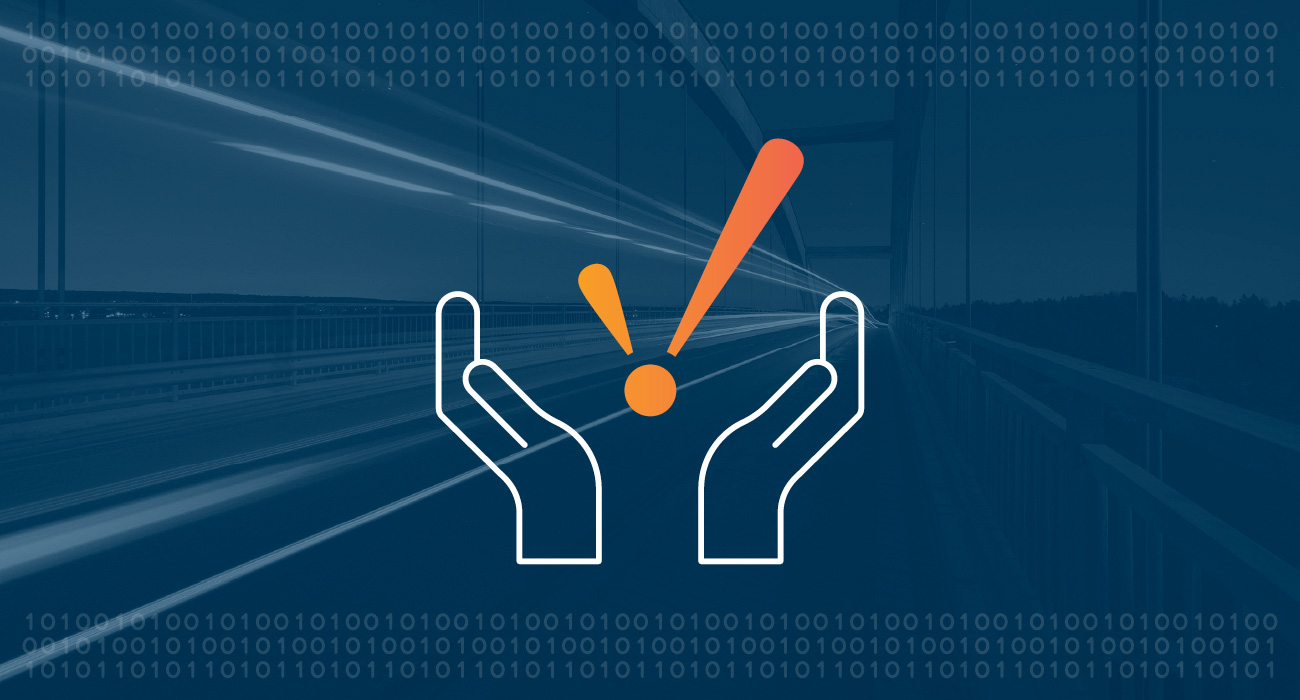Data, SCADA and Digital Transformation

Editor’s Note: Our content marketing team had the opportunity to sit down with Travis Cox, one of the Co-Directors of Sales Engineering at Inductive Automation. With so many industrial automation solutions out there, we wanted to pick Travis’ brain about some important topics affecting SCADA now and in the future. See what Travis has to say about SCADA systems, digital transformation, the explosive increase in data, and the future of SCADA.

How can users best determine whether to use a SCADA system or a distributed control system (DCS)?
First, we must look at what a DCS is and what it was built to accomplish. DCS systems were developed to be full end-to-end solutions usually built by a single vendor. The hardware and software are included and designed to work well together. The goal was to make a DCS a simple, straightforward solution.
With that said, distributed control systems have become monolithic. Even though the word “distributed” is in the name, if you had to replace a section or a device, you would have to replace the whole thing. You couldn’t upgrade or replace sections of it. That is why standards groups and organizations such as the Open Process Automation Forum were started, to develop open processes and standards so that users were not locked into one solution.
The most important thing for users is to be able to find best-in-class products that are based on open standards and are secure and interoperable. Users should have the ability to find solutions that provide specific functionality and be able to integrate into an overall solution. Having a proprietary system and being locked into a single vendor can cause headaches later down the line. You want to find a system that allows you to easily upgrade and maintain your system without having the need to replace an entire system or incur unreasonably high maintenance costs.
Proprietary solutions tend to be coupled directly to devices and other systems, which could be problematic for systems that are spread out or remote. Open-based protocols such as OPC UA and MQTT allow for decoupled architectures where data is published into an infrastructure where any application can have access to the data, promoting scalability and flexibility.
What it comes down to is making sure that platform solutions are based on open standards and offer unlimited licensing models to allow users to easily scale and expand industrial systems with reduced limitations. Solutions should also be interoperable and offer tools to implement comprehensive security.

How is SCADA adapting to industry’s digital transformation and what role will SCADA play in it?
One of the big changes with SCADA solutions is the increasing adoption of open standards, such as OPC UA, which has been around for quite some time. Some solutions are now adopting MQTT, which allows users to plug into a corporate infrastructure with any application and quickly get information that they need. Vendors must be able to provide a superior SCADA solution that does not connect directly to devices but is capable of getting that data and providing the context. SCADA systems have to work with other systems that can get data to more people. Mobility is a huge thing right now. SCADA solutions should be able to leverage technologies such as native HTML5 to take advantage of mobile devices.
At Inductive Automation, it’s important for us to look ahead and to be on top of these trends. We are setting the trend on how people should think about their systems and their ability to provide data to anybody no matter where they are. We want to be able to plug into other applications or the cloud so that we can get to a higher level of analytics and machine learning. So it's really just about getting up with the times, if you will.
Another consideration is to look at it from a security standpoint. Solution vendors must do all the right things to make sure that people from OT and IT come together. It is paramount that security is the focus. So adopting all of the latest tried-and-true standards and security practices is incredibly important.
Solutions should provide tools to implement security such as HTTPS or SSL for encryption over the web, federated identity providers to identify your users, and technologies such as two-factor authentication or single sign-on. We are going to lock things down properly and have encrypted connections everywhere. These security measures will help secure the environment in our changing and challenging landscape.
I believe these are the real major things facing SCADA systems during this time of digital transformation. We are talking about a real shift from being in this isolated, air-gapped system in a siloed environment to now being connected to everything else, everywhere. When you are connected to everything else, you have to support these more IT-standards-based systems and technologies that allow us to work with other data-driven systems.

How well are today’s SCADA systems equipped to deal with the increasingly large amounts of data gathered by sensors?
Ignition supports OPC UA and MQTT, which both promote scalability, MQTT in particular. We can have a lot more tags coming in via MQTT than we could have by connecting directly to PLCs. Having supporting architectures that have scalability in mind is important, yet the biggest thing to consider when it comes to data is the licensing models for SCADA solutions. The amount of data generated and needed will continue to increase. We have to be able to bring this data in, deliver it across an organization, and take advantage of it. The last thing we want to worry about is how much the increase in data is going to cost or ‘how much is it going to cost me to bring in 10 more data points or get this data to 10 more people?’ Worrying about licensing costs has to be a thing of the past.
A majority of SCADA systems out there, besides Inductive Automation, still have these proprietary, legacy-type licensing models and they are not scalable nor do they support open standards. These solutions will not allow you to easily, for example, buy a brand-new Opto 22 RIO device or buy a brand-new sensor from SignalFire or buy a brand-new Advantech ADAM device and bring it into the system that speaks MQTT natively.
Users really have to make a conscious decision to support these things so that they have the right models in place and honestly be on a platform that can scale and add more functionality.
The other major thing to consider when handling large amounts of data is the technology itself. If a user has a solution that does not support mobility like HTML5, MQTT, databases, or with the cloud, then the user is not very well equipped to handle all the data that is being generated. Having a flexible licensing model and the right technologies supported are key to handling large data.

What are the most important recent advances to SCADA systems that most users are not taking advantage of?
Mobility, Wi-Fi, and technologies such as HTML5 are advancements that users are not taking advantage of in regards to SCADA systems. In order to do mobility the best way, companies need to have Wi-Fi enabled in their plants and make that policy to allow it and most of them still do not allow it. It's still more a political thing than anything else. There are huge benefits to get data to anyone no matter where they are. Being able to leverage mobile devices by using their sensors such as GPS or the camera, or to be able to go and scan a barcode to get more relevant information about what you're looking at can provide incredible benefits.
Another big advancement that people aren’t taking advantage of is the integration with cloud environments such as AWS or Microsoft Azure. These are pretty amazing tools and these cloud technologies exist out there, but many companies are really struggling with the use cases for cloud integration. Companies are trying to identify the overall ROI, but they can look at use cases such as solving individual specific problems, focus on preventive maintenance or tuning processes that focus on predicting machine failures. There are different ways that companies can use the cloud and they would have to get the folks from the operation side along with folks from the IT side to adopt machine learning algorithms and work together to make this happen. Really it's a much harder thing for people to take advantage of obviously because there's more work involved. These are the two big areas that we’re seeing a lot of traction right now with our customers. These are advances that exist, it's just that they don't take advanced full advantage of them.
Another advancement that is not being taken advantage of is edge computing and MQTT. I think edge computing offers a lot. Some people look at edge computing as an expense. If I got to put up these edge computers out there, it's going to be expensive to do that. What return am I going to get? What value do edge devices provide? At the end of the day, edge devices are able to process data close to the source and it can be processed faster. Legacy PLCs aren’t going anywhere anytime soon; they are going to be there for quite a long time. It is becoming more expensive to replace a current infrastructure than it would be to add edge computing into the mix. Edge devices are able to process data closer to the source, poll it faster, provide access to more data, and publish it up to a central system or to the cloud. Users can use features such as store-and-forward to ensure data is not lost when connections are down. Users can also potentially embed a computer to talk directly to a PLC, run AWS Greengrass or Azure IoT, incorporate machine learning, and be able to have models running right there locally to look for things like the machine failure or similar types of applications.
To truly leverage MQTT and truly leverage edge computing, it really takes a commitment from the user to understand what they're doing and looking at how they can get value. Companies are so used to the way they do things that they don't want to touch their SCADA system. Companies may look at their system as being brittle and think ‘If it isn't broke, why fix it?’ This is really the wrong way of thinking. Companies need to say to themselves that we don't want to be stuck in yesterday, we need to look at moving forward to tomorrow. We need to get our infrastructure and our systems and slowly migrate them over. It’s not a rip-and-replace kind of thing. It's a slow migration and there are considerations for ROI and thinking about the particular use cases and where they can get value by using these things, by using mobile devices, by using edge computing, by being able to use or leverage the cloud. Companies will see the value, but they have to really come together and commit to do this and say this is where we want to go. I think a lot of organizations deal with a lot of political obstacles to using all the technologies that are available.
